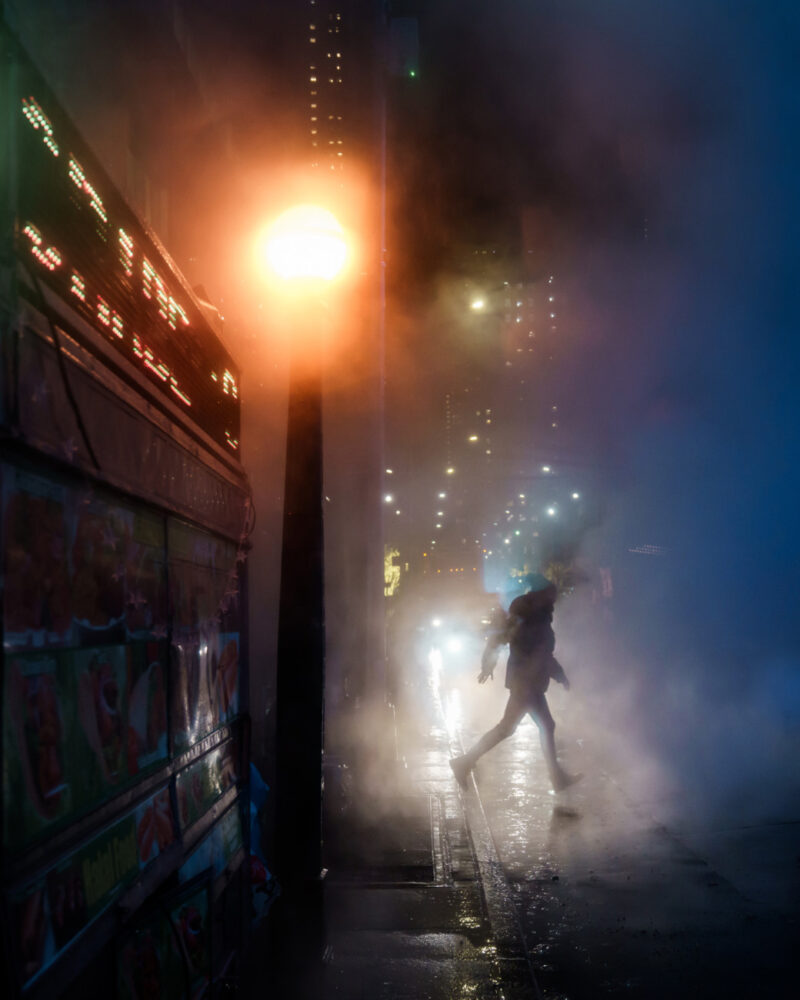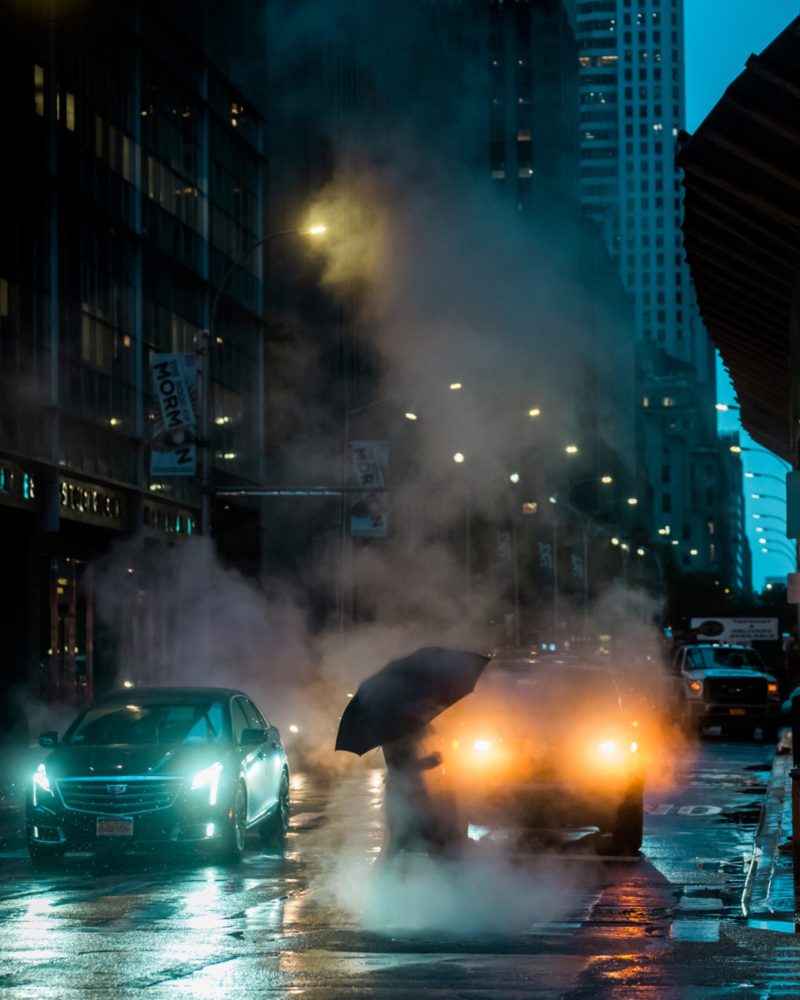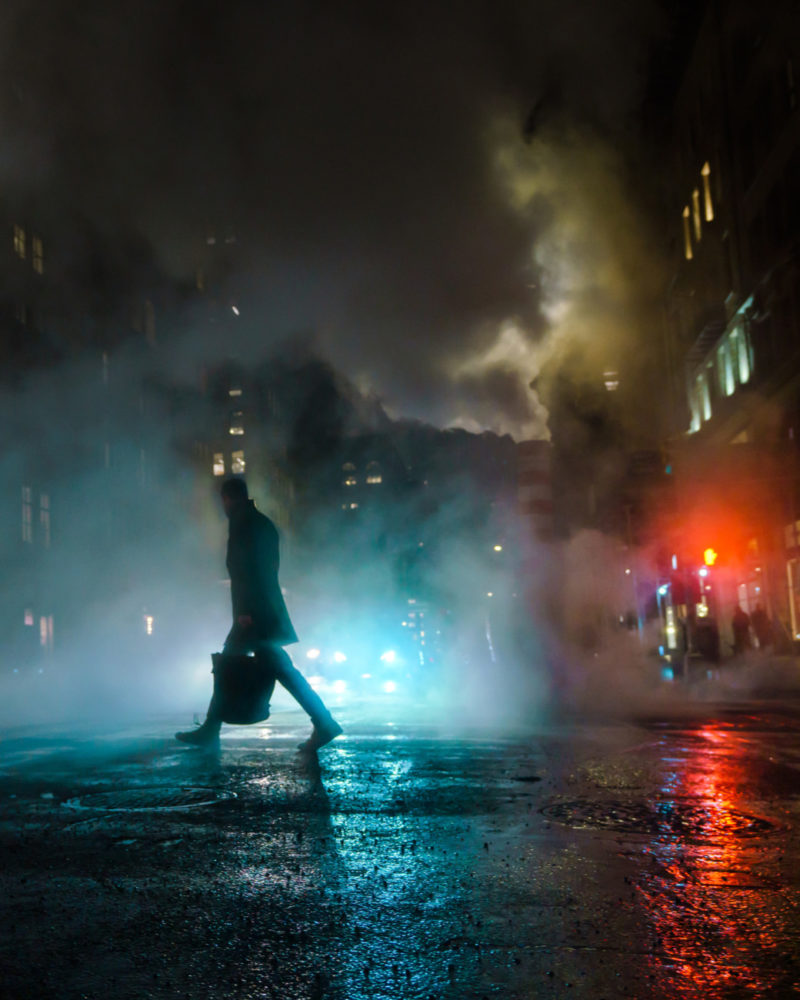Dave Krugman, who’s best known for his neo-noir, stylized photography of urban landscapes around the world that has propelled him to become a leading voice in the NFT space.
Krugman—one of the most collected NFT photographers who frequently has high-end NFT projects and drops—has become a spokesperson on how blockchain technology allows an artist to become a more “sovereign entity” outside traditional art world models and how we can renegotiate our relationship with the internet.
Krugman made his career outside the traditional artist model and has been advocating for Web3’s ability to create “digital objects” that introduce scarcity to the internet. He also founded ALLSHIPS, a creative community featuring podcast interviews and online features between Krugman and other artists ranging from discussions about art, Web3, NFTs, and more.

Emerald Arguelles: Can you describe your earliest memory of photography?
Dave Krugman: My earliest memory of photography is when I was about 9 years old at a summer camp program. I wandered into a darkroom black and white photography class and it forever changed my perspective on life. Being in that red-lit room, watching images emerge from blank paper in the developer, was the closest thing to magic I have ever experienced. I’ve been chasing that feeling my whole life, through every layer of technology that I have been lucky enough to experience.
EA: Have you always worked with street photography or have you experimented with other styles?
DV: I play in every arena of photography, though my main love is street photography. I love to wander through the world, looking for the beautiful, serendipitous overlaps of life. Moments that remind us of the beauty of this world, of humanity, of love and loss, and chaos and structure. These are the moments that bring me the most joy when I am successfully able to create an image that evokes emotion. Beyond street, I love portraiture, travel, and abstract photography—anything visual that I can study with my camera is something that I am keen to pursue.

EA: What inspires you about space before you shoot?
DV: The coincidence of different circumstances is what inspires me the most about photography. It is a study of the laws of physics: light, time, and space. The interactions between these variables inspire me endlessly, and I’m always seeking new ways to show the mysteries that are revealed by stopping time in its tracks.
EA: What has been your best experience in a new space/state/country?
DV: My favorite experience in recent memory was photographing Cuba with the Sony Alpha Collective. I’ve never been anywhere so unique, so hospital, and so visually interesting. The community there welcomed us with open arms, showed us their lives, and opened our eyes to new perspectives on life. It was an astounding experience and I will never forget the friends I made there. Fortunately, I have thousands of pictures to remind me how special it all was.
EA: How did you become introduced to NFTs?
DV: I was brought into the NFT world by my friend and photographer JN Silva, who was deep into the crypto space long before NFTs were even a thing. He told me about a growing art market on the blockchain, and I was skeptical but curious. I had no idea how powerful this technology could be until I immersed myself in the culture and ethos of crypto. The conversations I had with him were life-changing, and I’m always glad to play that role for artists just entering now. We are still tremendously early to something that will shatter many paradigms and I’m grateful to be at the forefront of this movement.

EA: Can you discuss how blockchain technology allows an artist to become a more “sovereign entity”?
DV: Digital artists have always been building on rented land, on platforms that have interests and incentives that are only serving advertising interests. For example, prior to NFTs, the only way to accrue value around my digital identity was to build a following on social media. If I could amass enough attention, I could go through a process of converting that attention into currency by tying myself to commercial interests. It was a very inefficient way to convert a community into currency, and what little value I could generate was taken by the middlemen who facilitated those relationships like brands and agencies. On top of that, it was always a compromise, trading my credibility for cash. As time went on, the incentives of the platforms further diverged from my own. In the race for attention, only the loudest win, conflict is rewarded, and innovation is suppressed. At any point, you can be kicked off, lose the identity you’ve built, and be left with nothing and no recourse to recover.
With blockchain, my identity is sovereign to me, no central service can deplatform me or control my assets. It is a decentralized consensus mechanism. The currency of attention has now been converted to true currency, in my case, ETH, that flows through our interconnected communities. My incentives now are to build those communities and create value for the ecosystem, a far cry from advertising models that chase attention at any cost, no matter the harm to individuals or society.

EA: How should an artist first get involved in NFTs?
DV: If you are an artist interested in NFTs, the first thing you should do is learn more about the technology. There is a tremendous amount of misinformation out there. There are sensationalist headlines that entirely miss the point of what is happening and it’s super sad to see so many artists missing the opportunity of a lifetime due to misinformation.
Next, participation is the key to thriving here. Everything is happening on Twitter. Come and join the conversation. Learn by taking part, collecting some things, mint something, just start playing with the technology and make friends in the community and the rest will fall into place. I run a website that helps people learn about this space and features some of the best artists here. You can find us at ALLSHIPS.CO. There is a lot of useful information there as well!
EA: What are you looking forward to?
DV: I’m looking forward to a world where artists are empowered with resources via these new technology layers. So many artists I know are now free from toxic models and are pouring the money straight back into building more for the creative community. We are witnessing, in real-time, the largest transfer of wealth into the creative class in human history. Artists are some of the most empathetic people in the world. I think this moment, and what comes from it, will forever change humanity as a whole.

EA: What would you like viewers to take away from your work?
DV: I’d like my work to be a catalyst for people’s imaginations. Every image holds an infinite amount of stories, it is up to the viewer to observe and uncover what these images evoke in their own imagination. A work of art is like the DNA of a whole universe. The potential is endless. Beyond that, I would like the people who experience my work to understand that a creative life is possible. You just need to be curious, clever, and open to new ideas.